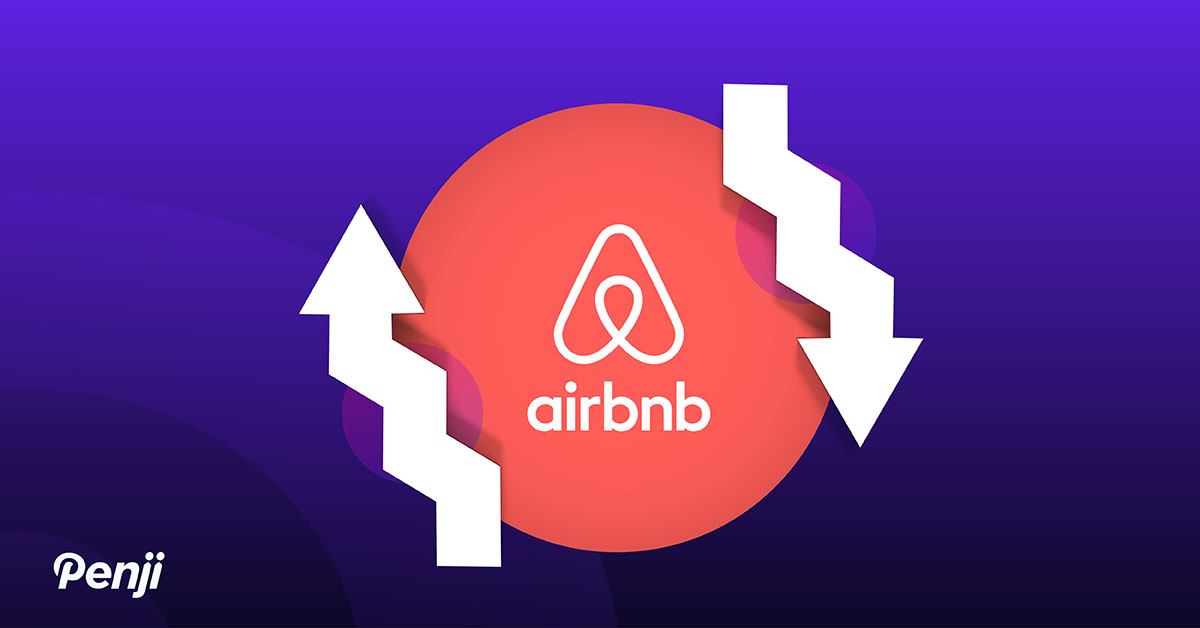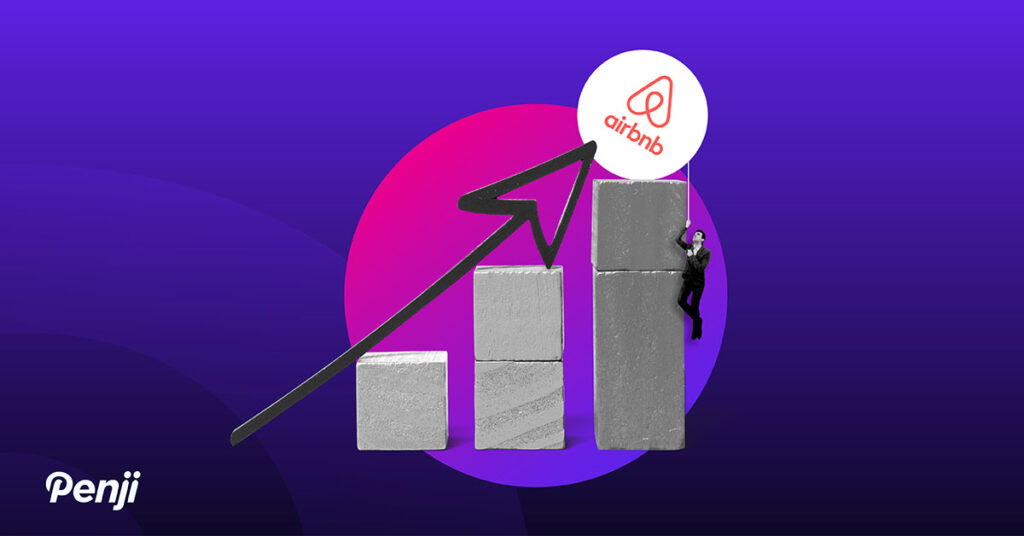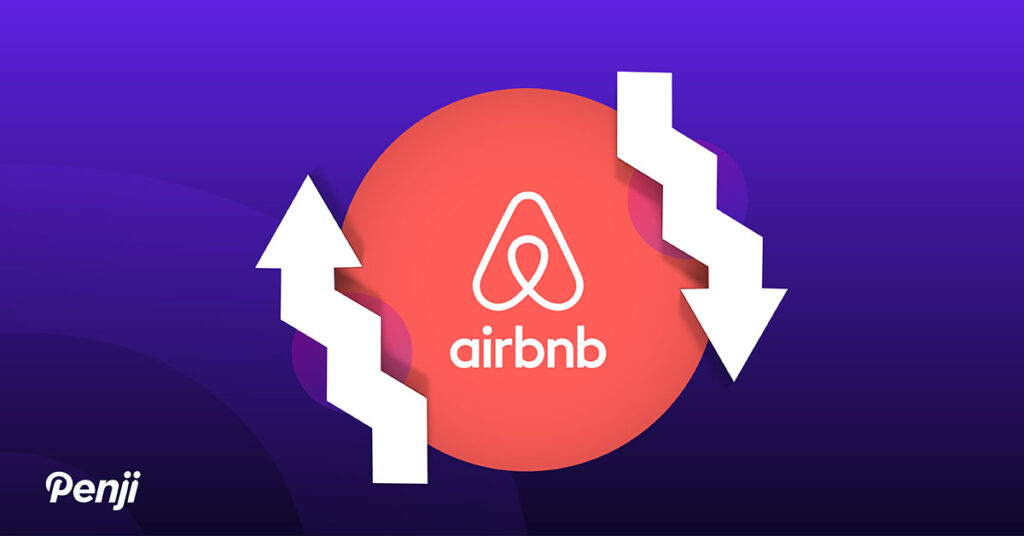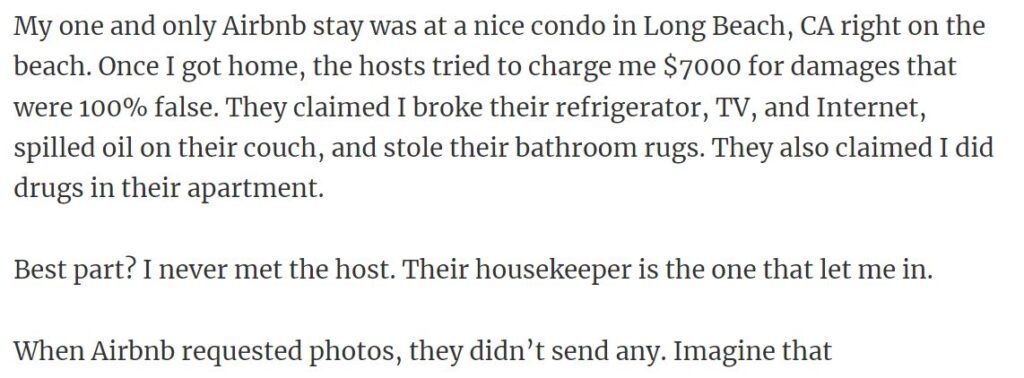
Airbnb introduced a revolutionary concept in the travel industry, promising travelers a chance to immerse themselves in the community like locals. Typically, this meant staying in unique accommodations at affordable prices. This ‘peer-to-peer’ lodging model allowed hosts to earn extra income by renting out their homes, creating a mutually beneficial relationship. The early days of Airbnb were characterized by charm and authenticity, offering quirky, personalized stays. This radically set them apart from the standardized, and often sanitized, experience of hotels.
Airbnb was founded in 2008 by Brian Chesky, Joe Gebbia, and Nathan Blecharczyk. The idea originated when Chesky and Gebbia rented out air mattresses in their San Francisco apartment to attendees of a design conference. They made a website called “Air Bed & Breakfast.” Seeing the potential, they expanded the platform to allow people worldwide to rent out their extra space to travelers.
The Peak of Popularity

Growth was rapid. By 2021, Airbnb had become a household name, synonymous with budget-friendly travel. The platform’s popularity soared as more travelers sought out local experiences and affordable accommodations.
Airbnb stood out from competitors for its one-of-a-kind stays that hotels just couldn’t match. By letting people rent out their homes or spare rooms, it created more affordable options and a chance to experience destinations in a more personal and memorable way. Their easy-to-use website, trusted review system, and worldwide reach made booking a breeze and helped them grow fast.
The COVID-19 pandemic, despite its initial blow to the travel sector, eventually played a role in Airbnb’s success. As lockdowns lifted, there was a surge in domestic travel, particularly to rural and less densely populated areas. This demand spike led to an explosion of new hosts eager to capitalize on people’s cabin fever. It resulted in Airbnb making almost $2 billion in profits in 2022.
Creative Marketing Campaigns
The company’s “Belong Anywhere” campaign put them on the map and did the best job of any campaign in terms of branding. They worked with DesignStudio after outgrowing their initial identity, which was too simplistic. They wanted something that expressed their commitment to community and meaningful travel. The rebrand led to their now famous “Belo” logo, representing belonging.
The company also teamed up with Pantone for some unique real-life marketing over the years. In 2017, they celebrated Pantone’s Color of the Year, “greenery,” by transforming a warehouse in East London into a lush, green retreat. This space was all about wellness and relaxation with various interactive activities centered around nature.

Guests entering the green paradise could try their hand at making green gin, set up their own botanical gardens, and join yoga and fitness classes. The experience also included foraging for fresh herbs and vegetables right from the warehouse walls, making terrarium vases, and creating leaf prints. To make the stay even more special, the downstairs area was converted into a green-themed bedroom with a luxurious bathroom that visitors could book overnight.
This campaign, much like their use of the color “Living Coral” in another exhibit, showcased Airbnb’s ability to use color to craft memorable and engaging experiences. It fit their new branding perfectly and left a lasting impression on visitors.
Airbnb’s Big Mistake
Despite its wild success, Airbnb began to face significant challenges. The platform’s shift from mom-and-pop rentals to corporate property management eroded its original charm. Many hosts transformed their properties into commercial ventures, leading to a rise in prices and a decline in the unique, personal touch that once defined Airbnb stays. This corporatization of hosting led to a slew of complaints from guests about misleading photos, poor property conditions, and too many demands from hosts.
To make matters worse, the proliferation of Airbnb listings contributed to housing shortages in many cities. With more properties being converted into short-term rentals, fewer homes were available for long-term residents, driving up rent and property prices. This issue was particularly bad in cities like New York and Austin, where the number of Airbnb listings outstripped available long-term rentals, exacerbating the housing crisis.
Needless to say, Airbnb’s identity began shifting from depth and charm to.. another soulless corporation causing problems for regular people. Once clearly distinguished from the hotel industry, Airbnb was now seen as just another big business causing problems.
The Downside of Success

Airbnb’s rapid growth and dominance in the market also led to a lack of competition. The company could operate with minimal incentives to improve the customer experience. Unlike traditional hotels, which compete fiercely for customer loyalty (eg. rewards programs, consistent service), Airbnb had no competition to keep it in check. This monopoly-like status resulted in inconsistent quality control, with many guests reporting horrors that would be unthinkable in a hotel setting.

The lack of a robust support system further aggravated the situation. Unlike hotels, which have full-time staff to address problems, Airbnb leaves conflict resolution to individual hosts. This approach led to numerous nightmare stories of guests finding themselves in unsuitable or even unsafe accommodations, with no real assistance.
Regulatory Backlash
Along with all this, cities didn’t take kindly to Airbnb’s negative impact. Around the world, they began implementing regulations to control the spread of short-term rentals. Places like New York, San Francisco, and Los Angeles enacted laws limiting the number of properties a host could list and set strict registration requirements. The regulations aimed to secure housing availability for long-term residents and protect local communities, many of which faced significant gentrification.
Today, Airbnb stands at a crossroads. The company faces a reckoning, with increasing scrutiny from both the public and city administrators. CEO Brian Chesky has at least acknowledged the need to address these issues.
The Future of Airbnb
The future of Airbnb hinges on its ability to balance growth with quality – getting back to its original brand promise. To regain customer trust, the company needs to prioritize transparency, improve the user experience, and make sure costs aren’t soaring out of control. Additionally, if they want to save face, they’ll need to address the darker impact of their business model on housing markets and local communities.
There’s a lot that brands can learn from Airbnb’s (partial) downfall. Their journey from a scrappy startup to a global travel giant is a story that we’ve seen many times – A brand that grows and changes and loses public trust.
These are the challenges that come with disrupting an industry, then getting too big to control. Whether Airbnb can adapt and reclaim its original brand identity remains to be seen, but its story serves as a cautionary tale for quickly scaling businesses.
About the author

Brianna Johnson
Brianna is a professional writer of 10+ years who specializes in branding, marketing, and technology content.







